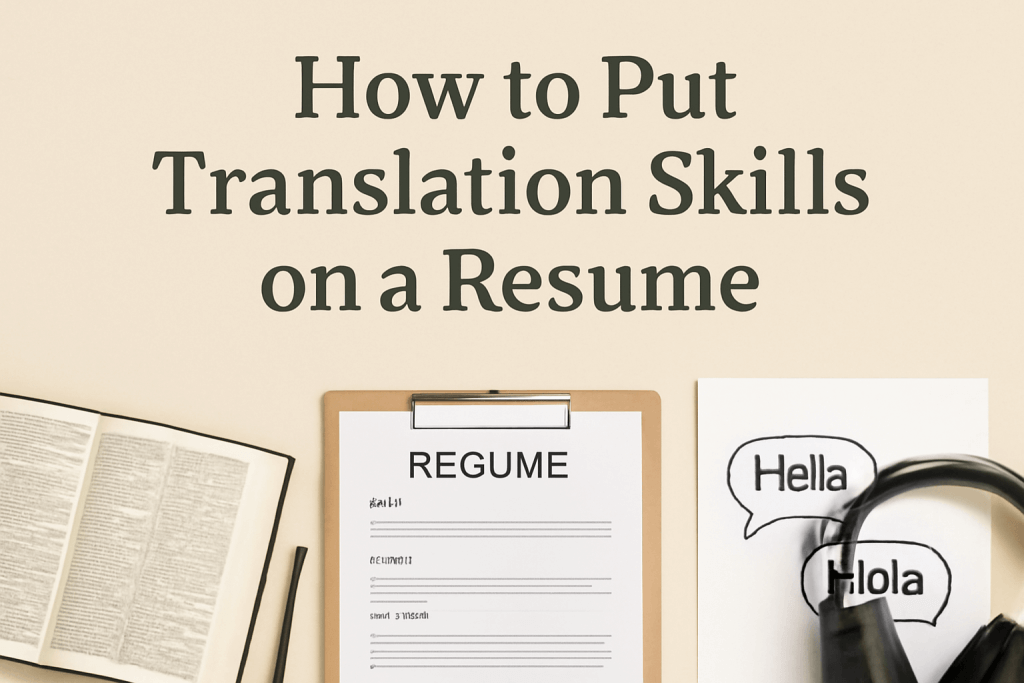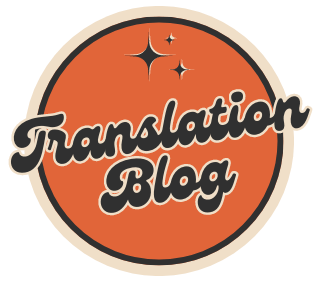These days, multilingual professionals are in high demand. But to stand out, knowing another language is not enough. You need to show it clearly. Highlighting your translation skills effectively on your resume can help you grab attention and prove you’re ready to contribute in an international setting.

The Importance of Translation Skills on a Resume
Translation skills are more valuable than ever in today’s global job market. As companies expand internationally, they need people who can help them communicate clearly across languages and cultures. Translators make this possible by adapting content, from marketing messages to legal documents, so it makes sense in different regions and feels natural to local audiences.
Being multilingual doesn’t just help if you’re applying for a translator role. It can also give you a strong edge in customer support, sales, marketing, and tech. For example, being able to respond to customer queries in their native language or localize a product manual can set you apart from other candidates.
Translation shows employers that you have attention to detail, cultural awareness, and flexibility, traits that matter in many jobs today. If you want help highlighting those skills effectively on your CV, check out RWL services online. They offer expert support to make your resume shine.
Where to Include Translation Skills on Your Resume
When considering how to put translation skills on a resume, strategically placing them where they can make the most impact is essential. Here’s how to showcase your translation abilities effectively across different sections of your resume:
Skills Section
Create a dedicated “Skills” section to highlight your translation competencies. List specific language pairs (e.g., English–Spanish), proficiency levels, and specialized areas like legal or medical translation. Additionally, include tools you’re proficient with, such as CAT software like SDL Trados or MemoQ.
Professional Summary
Your professional summary should immediately convey your translation expertise. For instance:
“Certified translator fluent in English and Spanish, especially Catalan, with over 5 years of experience in technical and legal document translation, utilizing tools like SDL Trados to ensure accuracy and efficiency.”
Experience Section
In the experience section, detail your translation-related roles and accomplishments. Use bullet points to describe tasks and achievements, such as:
- Translated over 500 legal documents from Spanish to English, maintaining a 99% accuracy rate.
- Collaborated with international teams to localize marketing materials for diverse audiences.
Education & Certifications
Include relevant degrees, courses, or certifications bolstering your translation credentials. For example:
- Bachelor’s in Translation Studies, XYZ University.
- Certified Translator, American Translators Association (ATA).
How to Describe Your Translation Skills Effectively
Describing your translation skills well on a resume can make a big difference when applying for jobs. Here’s how to do it convincingly.
Use Strong Action Verbs
Start your bullet points with action words that show what you did. Words like “translated,” “interpreted,” “localized,” or “proofread” instantly tell recruiters about your role. For example:
- Translated technical manuals from English to German, keeping them accurate and culturally appropriate.
Add Numbers to Prove Your Value
Quantifying your work helps employers understand your impact. For instance:
- Translated over 200,000 words of legal documents from French to English in just six months.
Be Specific About Languages
Don’t just say you’re bilingual — be clear about your language pairs and your level. For example:
- Languages: English–Spanish (native), French–English (advanced)
Mention Translation Tools
If you’ve worked with CAT tools, list them. These show you’re ready to handle large or complex projects. For example:
- Skilled in SDL Trados, MemoQ, and Wordfast.
Finally, please note your online presence. A strong LinkedIn profile background can help visually communicate your professional identity and boost your chances of getting noticed.
Indicate Language Proficiency Levels Clearly
How do you put translation skills on a resume? It’s essential to be clear about your language proficiency. Employers want to know your languages and how well you can use them in different situations.
Use Recognized Standards
Using widely accepted frameworks is the best way to show your skill level. The CEFR (Common European Framework of Reference for Languages) rates your ability from A1 (basic) to C2 (expert). If you’re in the U.S., you might use ACTFL levels instead, which go from Novice to Distinguished.
Be Honest with Yourself
It’s wise to break things down by skill: reading, writing, speaking, and listening. You might be great at reading in one language, but only average at speaking it. Be honest. Employers will appreciate it, and it helps avoid awkward situations later.
Use a Simple Table
A quick table can make your skills easier to understand at a glance:
| Language | Reading | Writing | Speaking | Listening |
|---|---|---|---|---|
| Spanish | C1 | B2 | B2 | C1 |
| French | B2 | B1 | B1 | B2 |
Showcase Relevant Tools and Technologies
In translation, being good with language is only part of the job. Knowing how to use the right tools is just as important. Employers want you to know the software that keeps translation projects organized, consistent, and efficient. Tools like SDL Trados Studio, MemoQ, Wordfast, and Smartcat are commonly used in the industry.
It also helps to show experience with terminology management. Tools like SDL MultiTerm or the built-in features in Smartcat are often used for this.
If you’ve helped adapt content for different countries, mention any localization platforms you’ve worked with, like Smartling, Transifex, or Lokalise. These tools help manage large-scale website, app, and software translation projects.
Finally, machine translation is becoming more common, and many companies now expect translators to be skilled in post-editing machine-translated content.
Sample Resume Snippets
Here’s how you can structure key parts of your resume to highlight your translation skills clearly and professionally.
Professional Summary
Multilingual translator fluent in English, Hebrew, and Mandarin with over 5 years of experience specializing in legal document translation. Adept at delivering 100% accuracy and cultural relevance in all translations, contributing to effective cross-border communications.
Skills
- Language Pairs: English–Mandarin, English–Spanish
- CAT Tools: SDL Trados, MemoQ
- Specializations: Legal, Medical, Technical Translation
Experience
Senior Translator
XYZ Translations Inc., New York, NY
June 2020 – Present
- Translated and localized more than 200 technical manuals from English to Spanish, increasing user comprehension by 30%.
- Collaborated with product teams to ensure translations aligned with brand tone and market expectations.
- Managed terminology glossaries to maintain consistency across all documents.
Common Mistakes to Avoid
Avoid common mistakes that can hurt your chances when adding translation skills to your resume. First, don’t exaggerate your language abilities. Only claim fluency if you’ve got real experience or certifications to back it up. Second, be specific. Saying you’re “good at languages” isn’t enough. Instead, list your language pairs and clearly state your proficiency levels.
Cultural awareness is just as important as language skills. An excellent translation isn’t just accurate. It’s appropriate for the audience. Ignoring cultural differences can lead to awkward or even offensive results. And lastly, always proofread your resume. As someone working with words, even a small typo can leave a negative impression.
How your resume looks also matters. A clean, easy-to-read layout makes your skills stand out. Make sure you pick a proper font for a resume to keep it professional and polished from top to bottom.
Conclusion
If you want your resume to get noticed, be smart about how you put translation skills on a resume. Show what languages you know, how well you know them, and where you’ve used those skills in real work. Mention the tools you’re comfortable with, like CAT software, and be clear about any special areas you focus on, like legal or medical translation.
It also helps to keep growing. Take a course, earn a new certification, and stay up to date with industry trends. Now’s a wonderful time to go back and refresh your resume using these tips so it really reflects your skills and experience.

